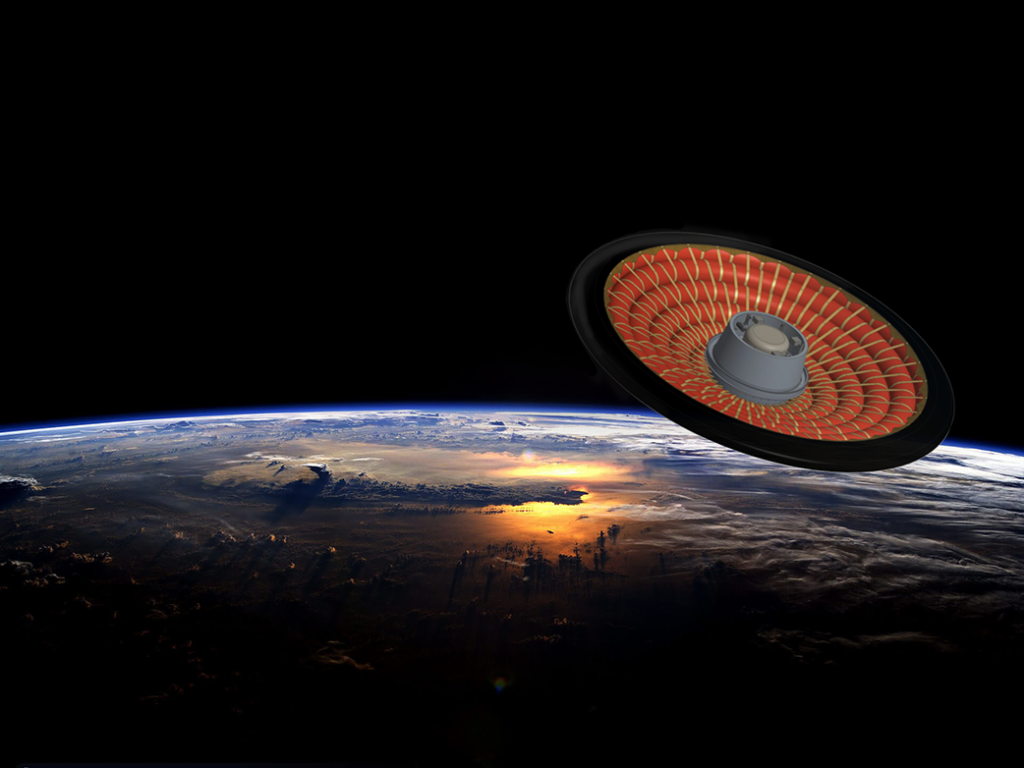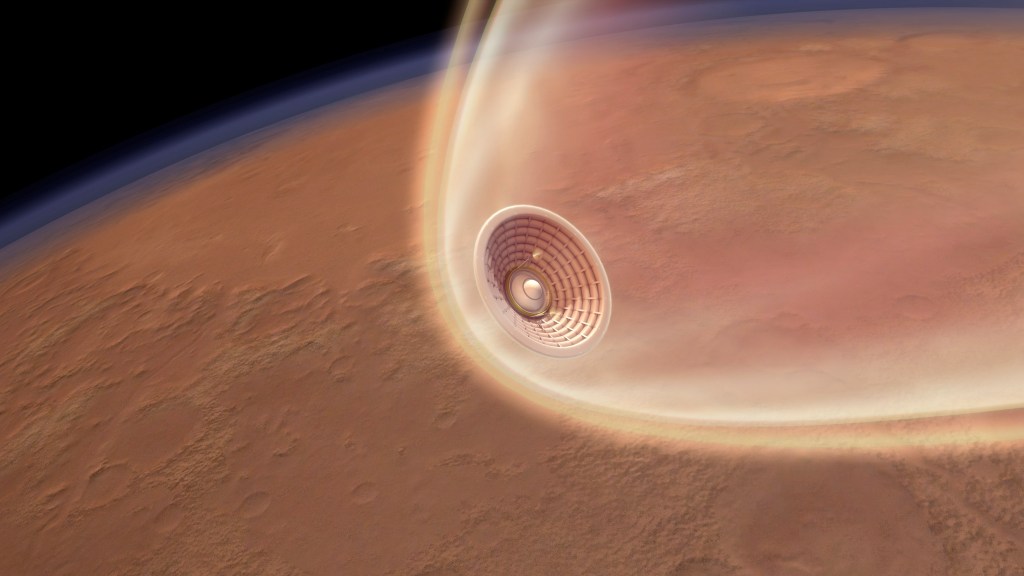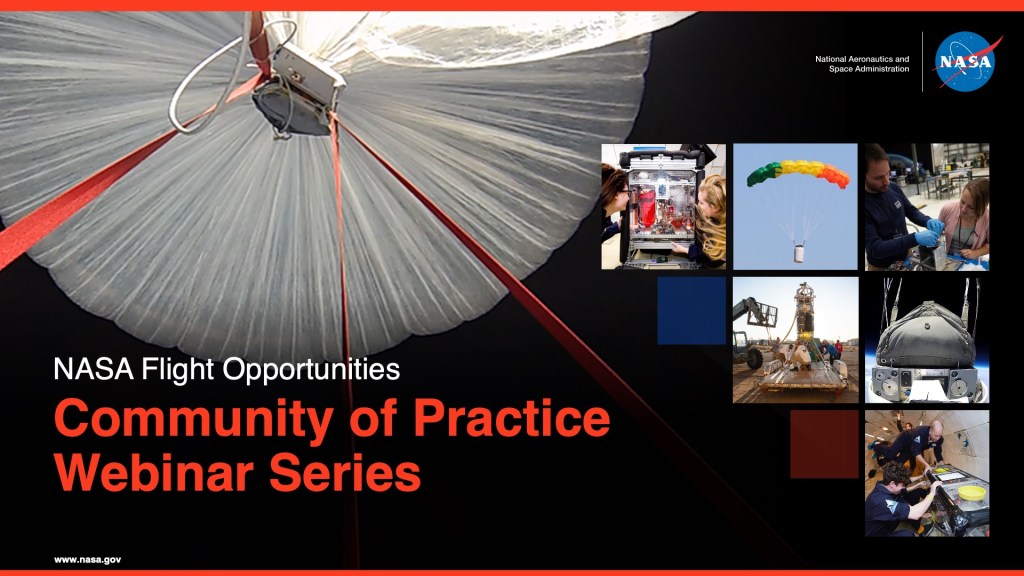


Flight Testing Gene Expression,
Thermal Protection Technology
FLIGHT SUMMARY
NASA’s Flight Opportunities program supported the testing of two technology payloads on the August 29, 2024, suborbital flight test operated by Blue Origin. Part of the agency’s Space Technology Mission Directorate, Flight Opportunities rapidly demonstrates space technologies through suborbital flight testing with industry providers.
One payload was a University of Florida technology that helps researchers understand the biological effects of changes in gravity by analyzing patterns of gene expression in plant samples. Principal investigator Robert Ferl conducted this experiment himself, representing the first time a NASA-funded researcher is flying with their payload on a suborbital rocket. This flight test was funded by a grant through the Flight Opportunities program’s TechFlights solicitation with additional support from NASA’s Division of Biological and Physical Sciences.
The other payload is evaluating the ability of new materials for TPS (thermal protection systems) — developed by HeetShield of Flagstaff, Arizona, under the SBIR (Small Business Innovation Research) program — to withstand the rigors of launch and descent. Mounted to the outside of New Shepard’s propulsion module, the materials are exposed to spaceflight and reentry conditions, gathering valuable insights ahead of future mission applications.
Below is more about these payloads and the flight test objectives.
Thermal Protection Technology
Flight Provider
Blue Origin
Flight Test Platform
Reusable suborbital rocket system
Launch Date
August 29, 2024
Location
Launch Site One, West Texas
University of Florida’s Gene Expression Analyses
Researchers seek to close the knowledge gap about how organisms initiate responses to changes in gravity.
About the Payload
Building on a long history of suborbital and orbital flight testing, this researcher-tended experiment aims to measure the biological response of plants to changes in gravity. Before flight, University of Florida researchers pre-loaded small, self-contained Kennedy Space Center fixation tubes (KFTs) with plants and preservative. During the flight, principal investigator Rob Ferl activated the tubes to rapidly release a preservative at four key stages of gravity: 1 g before liftoff, at the start of microgravity (i.e., just after boost), at the conclusion of microgravity, and at the end of the flight. After the flight, Ferl and co-principal investigator Anna-Lisa Paul use transcriptome analyses — which capture the patterns of gene expression during the stages of flight — of the preserved plants to examine the effect of gravity transitions on the plants.
Applications
Using KFTs during suborbital flight could enable the collection of biological data in transitional gravity environments, which would shed light on our understanding of how various stages of spaceflight affect gene expression. Technology end users include biological researchers interested in capturing molecular structural changes in an organism in variable gravity environments. KFTs used suborbitally could also have applications in material sciences and fluid physics.
Flight Test Objectives
The flight test aims to evaluate the effectiveness of using KFTs to capture biological responses during the transitions from Earth’s gravity, through increasing g loads, to the microgravity environment enabled by Blue Origin’s New Shepard suborbital rocket system. The gene expression data collected is anticipated to characterize the early phases of the rapid adaptation that accompanies transitions among g loads.
The University of Florida’s technologies and experiment operations to evaluate plant molecular responses have been matured through flights aboard aircraft flying parabolic profiles as well as autonomous and crew-tended flight tests aboard suborbital rocket-powered vehicles. These innovations include telemetric imaging systems that can capture real-time signal transduction within plant organs, in addition to technologies that enable rapid plant preservation in KFTs to chemically “freeze” the moment for gene expression profiling, like the payload slated for this upcoming flight. Ferl and Paul have also gathered valuable data through testing aboard the International Space Station that has contributed to their technology’s development. The researcher-tended operations on the August 29, 2024, flight leveraged Ferl’s familiarity with the payload and experiment objectives as well as his extensive flight test experience.

HeetShield’s Thermal Protection System Materials
TPS materials protect space vehicles from the intense heat generated during planetary entry.
About the Payload
Small business HeetShield has developed two new TPS materials that will be mounted to the outside of New Shepard’s propulsion module for flight testing. The materials are (1) fibrous insulation embedded with ceramic “opacifiers” that make the material opaque and thus reduce the radiation mode of heat transfer, and (2) flexible insulation with reinforced aerogel, which is designed to minimize gas conduction heat transfer. HeetShield developed these materials under SBIR awards with NASA and the U.S. Air Force Office of Scientific Research.
Applications
Designed to improve performance and reduce the bulk of a planetary entry vehicle’s TPS, HeetShield’s materials can be tightly folded for easy storage. This makes them beneficial for applications such as the HIAD (Hypersonic Inflatable Aerodynamic Decelerator) technology. HIAD is an inflatable heat shield technology that would allow for extremely large masses to be delivered to destinations with atmospheres like Earth-return and Mars. These TPS materials might also benefit Earth-based applications like firefighter shelters.
Flight Test Objectives
The flight test aims to assess the thermal performance of the two new TPS materials in a relevant environment, since the temperature and atmospheric pressure conditions will be similar to those of planetary entry. After the flight, HeetShield will analyze the structure of the materials to determine how they were affected by the flight.

For media inquiries, please contact:
Jasmine Hopkins | jasmine.s.hopkins@nasa.gov








































